#Paoli Battlefield Site and Parade Grounds
Photo




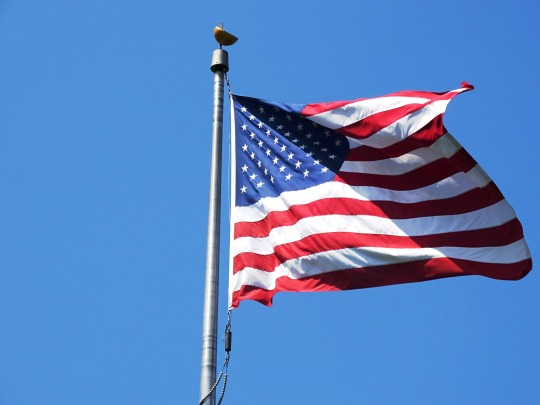
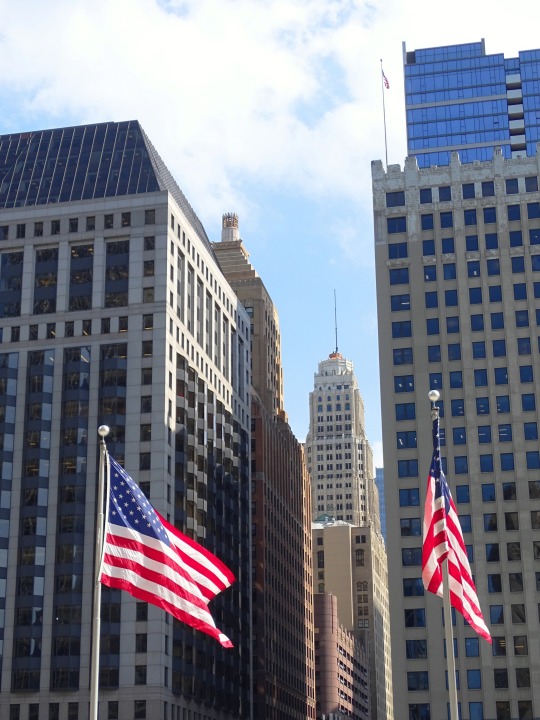
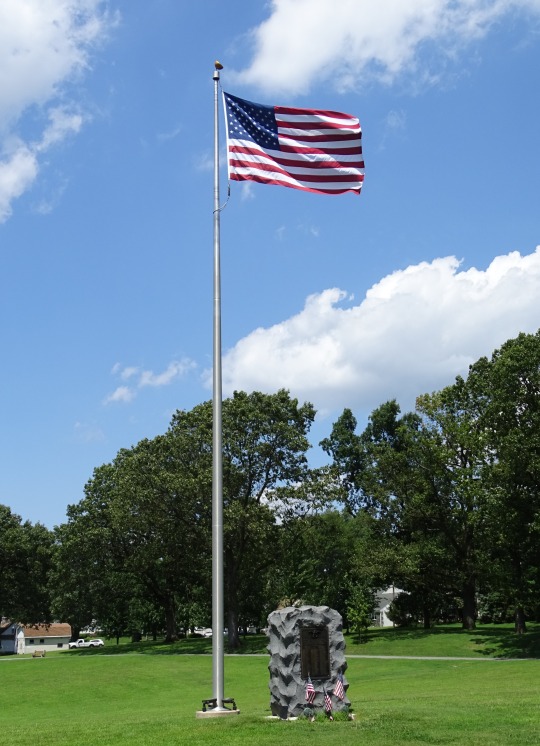
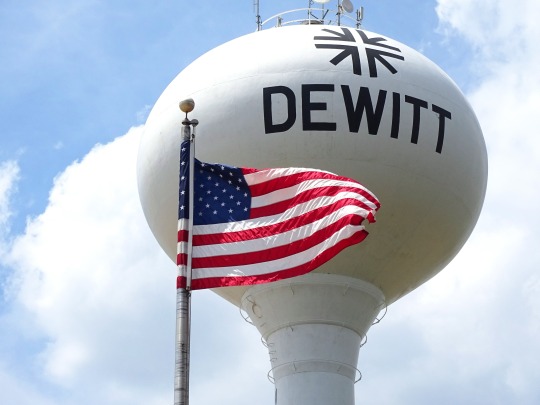

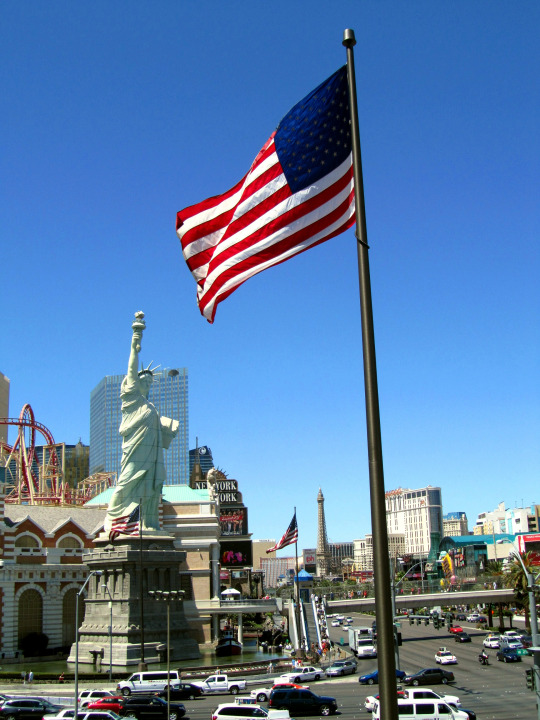
The United States adopted The Star-Spangled Banner as its national anthem on March 3, 1931.
National Anthem Day
In the early years of the republic, there were a few popular patriotic songs, such as "Yankee Doodle" and "Hail Columbia," but there was no national anthem. Today we celebrate the "The Star-Spangled Banner," which became the official national anthem of the United States on March 3, 1931. The song was inspired by a real flag and events that took place surrounding it.
The War of 1812 began in June of 1812. The United States achieved some early victories, but after France and Napoleon were defeated at Waterloo in April of 1814, the British were able to focus more on the war in the United States. After invading Washington D.C. and setting fire to The White House and Capitol in August, the British turned their attention to Baltimore, Maryland.
On September 13, Baltimore's Fort McHenry withstood a 25-hour bombardment from the British Royal Navy. Early on the morning of September 14, soldiers hoisted a large (30 x 42 feet) American flag over the fort. At the time, Francis Scott Key, an attorney who worked in Washington D.C., was on a ship in the harbor of Baltimore. He had been working to negotiate the release of Dr. William Beanes, who had been captured in an earlier battle. Although he was able to secure Beanes' release, the Americans were told they could not leave until the bombardment was over. As Key saw the flag wave over the fort, he wrote the first verse of what would become "The Star-Spangled Banner." At the time he named it "Defense of Fort M'Henry."
Sometime shortly thereafter, Key wrote three more verses. (Today just the first verse is commonly sung, with the fourth verse sometimes being used at formal occasions.) The verses were issued on a broadside by a local printer on September 17, and they were printed in two Baltimore newspapers, the Baltimore Patriot and The American, on September 20. The words were then printed by more papers along the East Coast.
Key set the verses to the tune of an English drinking song called "To Anacreon in Heaven" (also known as "The Anacreontic Song"), which was written in 1775 by John Stafford Smith and originally performed by the Anacreontic Society, a gentlemen's club in England. The song eventually became popular in the United States. Its subject, Anacreon, was an ancient Greek poet known for loving wine. Key had previously used the tune to accompany verses he had written in 1805 about American naval victories in the Barbary War. In fact, some of the wording he had used in the verses for that war were similar in nature to those in "Defense of Fort M'Henry." By one account, it was Key's brother-in-law who noticed the new verses fit the same melody, and convinced him to use it again. In October, Baltimore actor Ferdinand Durang gave the first public performance of the song, and the following month the song appeared in print under the title "The Star-Spangled Banner" for the first time.
The song gained in prominence following the Civil War, because it was about the flag and the flag was increasing as a symbol of national unity at the time. It became a staple of Fourth of July celebrations and other patriotic events. In the 1890s, the U.S. military began using it for ceremonies. In particular, it became the song of the Navy's flag raisings.
Woodrow Wilson signed an order in 1916 to make "The Star-Spangled Banner" the national anthem, but it did not become the official anthem until Congress passed a law fifteen years later. Wilson also asked the Bureau of Education to standardize the song, as there were a few different versions at the time. Five musicians worked on the song, including John Philip Sousa. The new version was first performed on December 5, 1917.
"The Star-Spangled Banner" made its major-sporting-event debut on September 5, 1918, at Chicago's Comiskey Park, during the first game of the World Series between the Chicago Cubs and the Boston Red Sox. The United States was in World War I at the time, and there was some added emotion in the air because a bombing had taken place the day before at the Chicago Federal Building. A military band played the song during the seventh-inning stretch, and players and fans saluted. The song soon began being sung at other baseball stadiums, and then spread to other sports.
On April 15, 1929, Rep. John Linthicum (D-Md.) introduced a bill to make "The Star-Spangled Banner" the national anthem. He had previously introduced such a bill four times before, going all the way back to 1918. As part of his district was in Baltimore, some thought that he was pushing for the bill for himself and for his district more than he was doing it for patriotism and the country. The bill eventually got a hearing before the House Judiciary Committee, and Linthicum presented them with a petition with 5 million signatures, which had been organized by the Veterans of Foreign Wars. He also presented them with resolutions and letters from 150 organizations and messages of support from 25 governors. The House approved the bill on April 21, 1930, and the Senate did on March 3, 1931. President Herbert Hoover signed it the same day and the "Star-Spangled Banner" became the official national anthem of the United States.
Although it has largely been looked upon as a patriotic song about freedom, it has not been without controversy. Key owned slaves for many years, including at the time when he wrote the song, which includes the line "the land of the free." He eventually freed his slaves, and his position was that slaves should return back to Africa. In recent times, some have used the song to protest racial injustice, by staying seated or kneeling when the anthem is played at sporting events. They have seen this as a patriotic gesture, while others have seen it as quite the opposite.
And what became of the actual star-spangled banner that the song was written about? The flag had been sewn by Mary Pickersgill with the help of a few others. After the battle, it was given to George Armistead, the commander of Fort McHenry. He died a handful of years later and his widow, Louisa, received it. It stayed in the family for many years and was rarely seen. In 1878, the Armistead's grandson, Eben Appleton, inherited the flag. He allowed it to be displayed at Baltimore's sesquicentennial in 1880, but then put it in a safety deposit box because he wanted to preserve its condition. He loaned it to the Smithsonian Institution in 1907, and donated it permanently to them in 1912, with the request that it be on display for the public. In the late 1990s, a preservation project was undertaken. The flag can be visited today at the Smithsonian's National Museum of American History.
How to Observe National Anthem Day
There are many ways to celebrate the day:
Read, memorize, and sing "The Star-Spangled Banner."
Visit the original Star-Spangled Banner at the National Museum of American History.
Visit the home where the flag was sewn.
Explore Fort McHenry, where the flag once flew.
Read a book about the "Star-Spangled Banner," such as Marc Ferris' Star-Spangled Banner: The Unlikely Story of America's National Anthem or Marc Leepson's What So Proudly We Hailed: Francis Scott Key, A Life.
Watch a documentary about "The Star-Spangled Banner," or watch a video about the Star-Spangled Banner exhibit.
Watch or listen to noteworthy renditions of the "Star-Spangled Banner."
If you are not from the United States, find out if your country has a national anthem, and learn about it and its history.
Source
#Alamosa#Colorado#Sonoma#St. Helena#Bunny Foo Foo by Lawrence Argent#Turnbull Wine Cellars#Oakville#vacation#summer 2022#2019#original photography#Malvern#Paoli Battlefield Site and Parade Grounds#National Anthem Day#Star-Spangled Banner#3 March 1931#anniversary#US history#DeWitt#US flag#Chicago#architecture#landscape#cityscape#Las Vegas#Paradise#USA#2011
27 notes
·
View notes
Photo


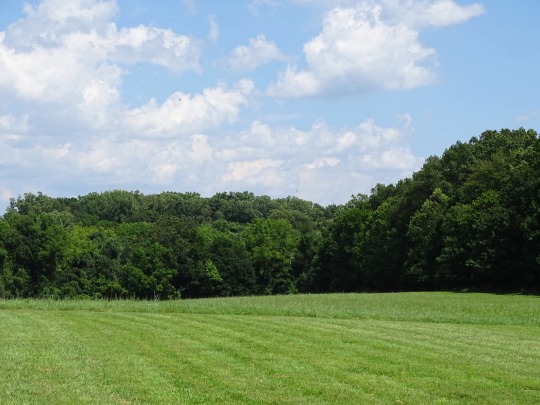
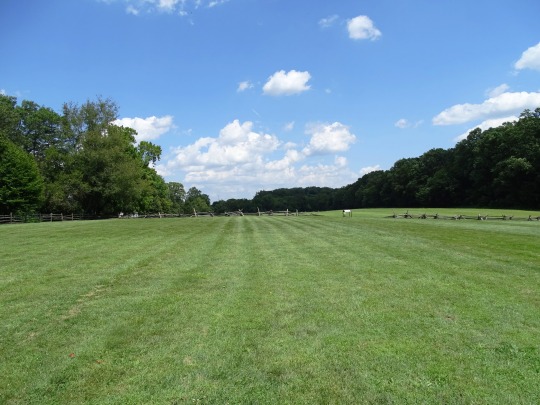
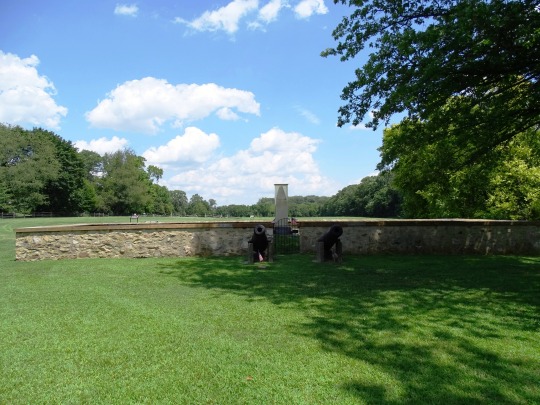

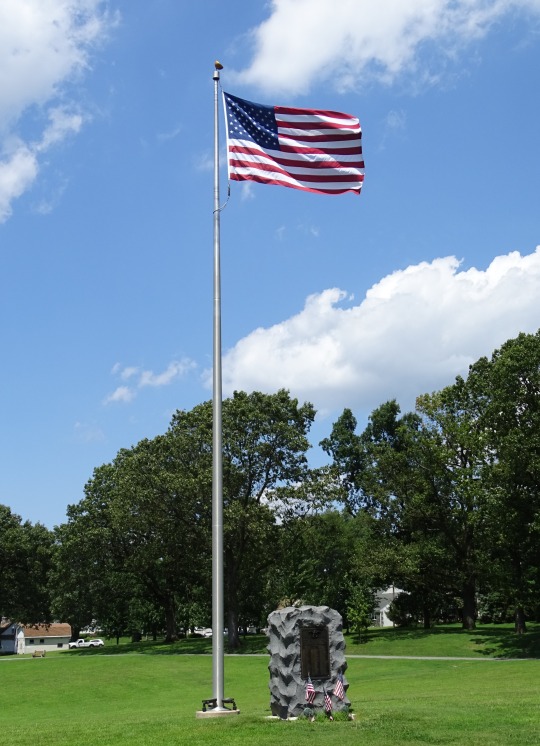
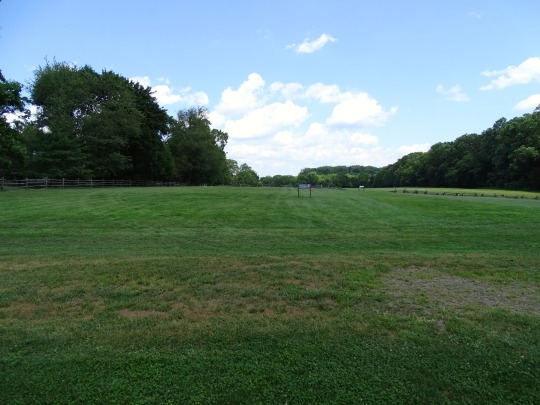


Clouds (No. 888)
Paoli Battlefield Site and Parade Grounds, Malvern
#Paoli Battlefield Site and Parade Grounds#Malvern#Pennsylvania#vacation#Battle of Paoli Tavern#American Revolutionary War#US history#landscape#American War of Independence#summer 2019#cityscape#forest#woods#nature#flora#tree#lawn#fence#blue sky#clouds#free admission#tourist attraction#landmark#US flag#memorial#original photography#USA
3 notes
·
View notes
Photo








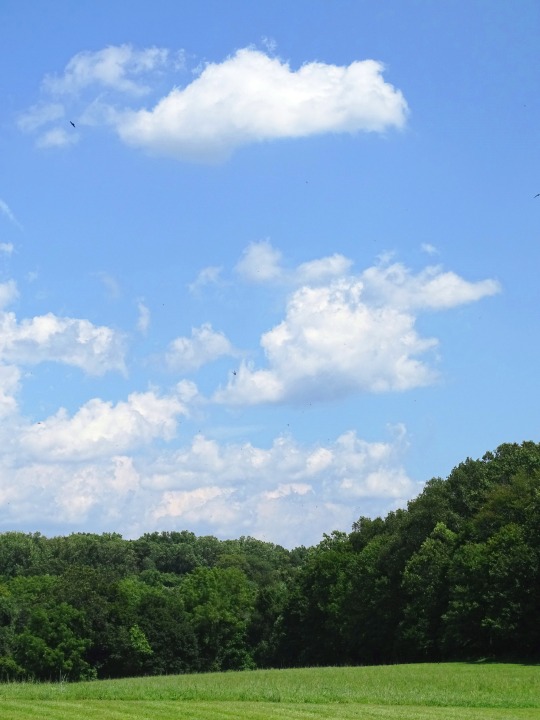

The Battle of Paoli (also known as the Battle of Paoli Tavern or the Paoli Massacre) was a battle in the Philadelphia campaign of the American Revolutionary War fought on September 20, 1777.
#Paoli Massacre Monument#Battle of Paoli#Battle of Paoli Tavern#Malvern#Paoli Massacre#Philadelphia campaign#20 September 1777#US history#245th anniversary#American Revolutionary War#tourist attraction#landmark#free admission#American War of Independence#Paoli Battlefield Site and Parade Grounds#Paoli Massacre obelisk#landscape#countryside#original photography#summer 2016#flora#woods#forest#lawn#snake fence
3 notes
·
View notes
Photo
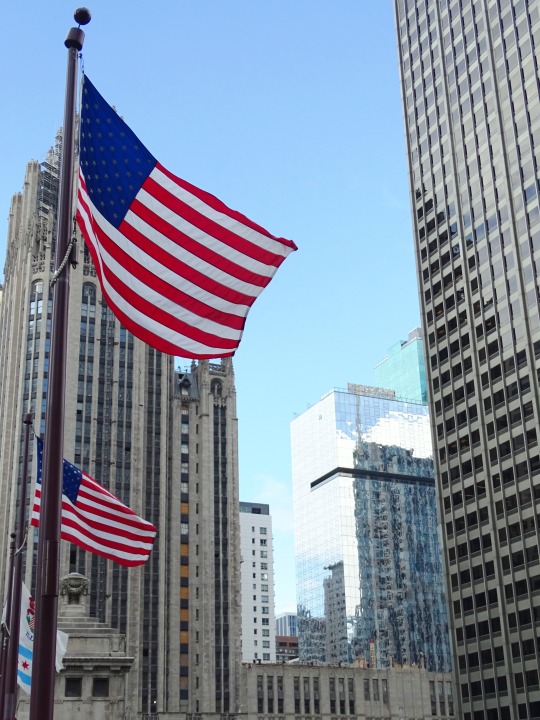





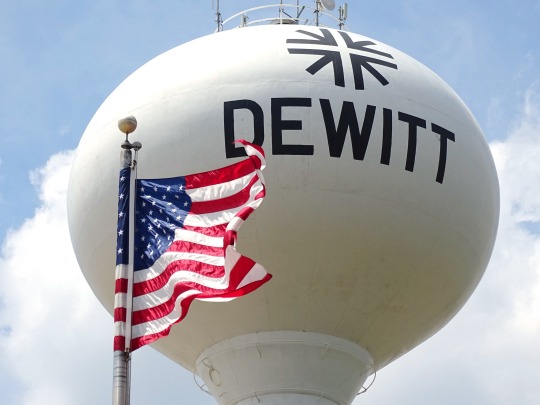


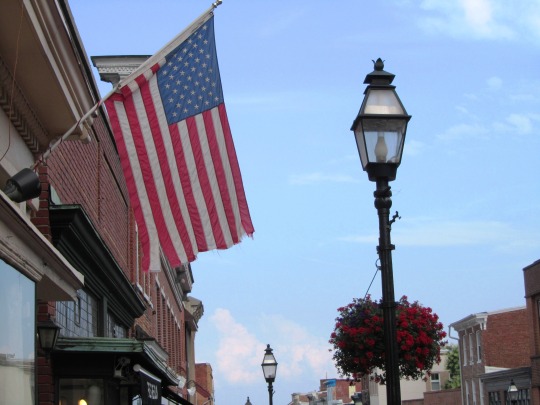
National Flag Day
America’s Flag Day marks the Second Continental Congress’s adoption of the first U.S. national flag on June 14, 1777. The first flag featured the same 13 red and white stripes we see today. However, the number and arrangement of stars have changed as the number of states has increased over the centuries. The current flag has remained the same since 1960. Will we ever go from 50 to 51? Read on for a look at some possible statehood candidates. And consider this a warmup for Independence Day — in just 20 days.
Flag Day timeline
1776–1777 First American Flag Created
Continental Congressman Francis Hopkinson designs a United States flag and a flag for the U.S. Navy, however, Hopkinson's naval flag becomes the preferred National flag and the Continental Marine Committee sponsors the U.S. Flag Resolution on June 14, 1777.
1916 President Woodrow Wilson Recognizes Flag Day
Celebrating the selection of the first American flag back in 1777, President Wilson signs off on establishing June 14 of each year as Flag Day.
July 4, 1960 The Current U.S. Flag is Completed
The 50th star, representing Hawaii (not Alaska), completes the flag flown in the U.S. today.
July 20, 1969 The U.S. Flag Sees the Moon
There are now six U.S. flags present on the moon, but the first was placed by Neil Armstrong in 1969.
Flag Day Activities
Plan a costume contest as part of a BBQ
Teach your kids or less informed friends a history lesson
Make a healthy patriotic snack
The stars and stripes aren't just for flags anymore. Take the opportunity on Flag Day to sport the red, white, and blue on socks, bathing suits, and hairstyles. It's a perfect day to celebrate your patriotism with a fun twist.
An American flag trivia game is a quick and easy way to learn a few tidbits. Most people know that each star represents a state, but do they know that a new star only appears on July 4 following a state's admission to the Union? Trivia - bam!
Strawberries, blueberries, marshmallows, OH MY! Some of our favorite fruits lend themselves very well to creating flag-themed cakes, so roll with it. Fine, marshmallows aren't a fruit, but they're basically a summer necessity, so we'll let it slide.
5 American Flags — By The Numbers
50 — and counting
49
48
31
13
We've been at 50 for nearly 60 years. Possible candidates for the 51st star? Puerto Rico, Guam, and Washington, DC.
Seven times seven? A perfect square. There's just so much luck in this flag, we need to thank Alaska (January 1959) for joining us. This one had a short reign. Hawaii (August 1959) would soon make it 50.
It featured such beautiful symmetry with the addition of New Mexico and Arizona in 1912 and flew proudly for 47 years.
The number 31 doesn't easily lend itself to neat patterns. If we didn't actually love California (added in 1850) so much, we'd probably have made it secede after seeing the lack of symmetry. (This flag lasted seven years!)
America's original flag, it's the only one that dared defy the straight line pattern of all its successors. If you ask us, the 13 stars in a circle better represent the unity of the, uhhhh, union.
Why We Love Flag Day
A chance to show patriotism
Parades
It reminds us summer is near
It's easy to get so caught up in our day-to-day lives that we sometimes forget to be thankful for the bigger picture. Flag Day reminds us that we are one country — united — despite our disagreements.
Americans love to have parades for many events and holidays. Mid-June is the perfect time to set up that camping chair on the street corner and watch the local firefighters, school bands and dance troupes strut their stuff.
The weather is starting to behave, kids are wrapping up school, and BBQ season is upon us. Flag Day gives us another reason to celebrate outside and enjoy the sunshine.
Source
#Turnbull Wine Cellars#Paoli Battlefield Site and Parade Grounds#St. Helena#Malvern#Chicago#National Flag Day#architecture#cityscape#travel#USA#vacation#US flag#older flags#stars and stripes#old glory#DeWitt#California#Iowa#Illinois#Flight 93 National Memorial#Pennsylvania#landscape#countryside#Carbide & Carbon Building#Las Vegas#Nevada#Annapolis#Maryland#14 June 1777
2 notes
·
View notes
Text
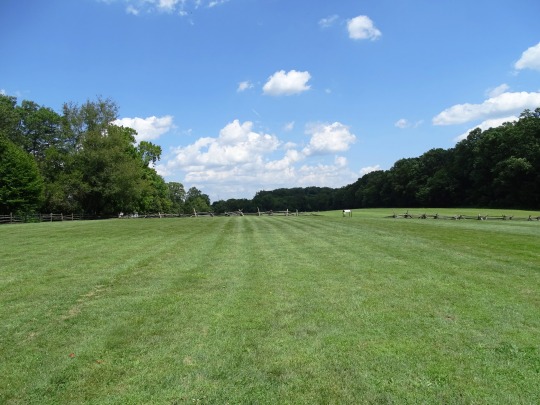



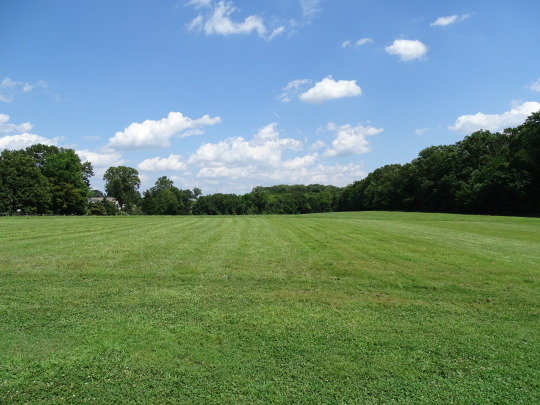
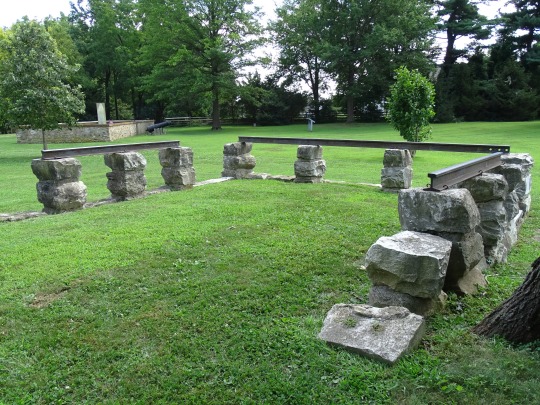

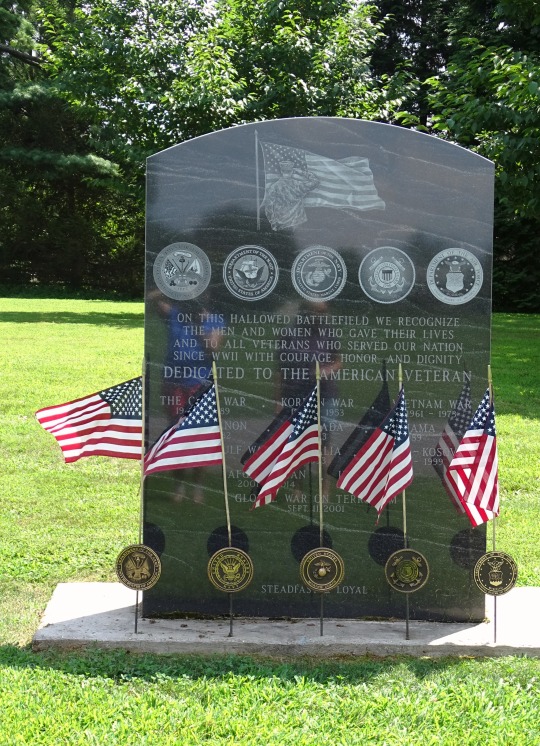
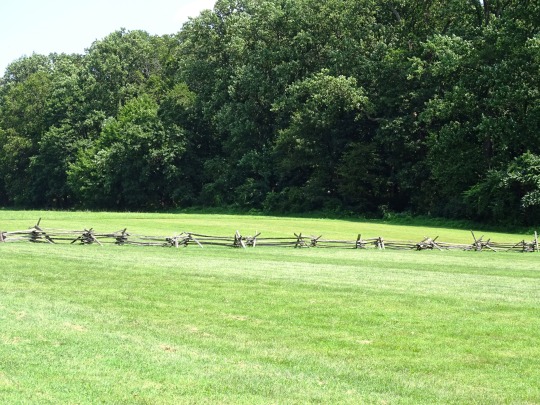

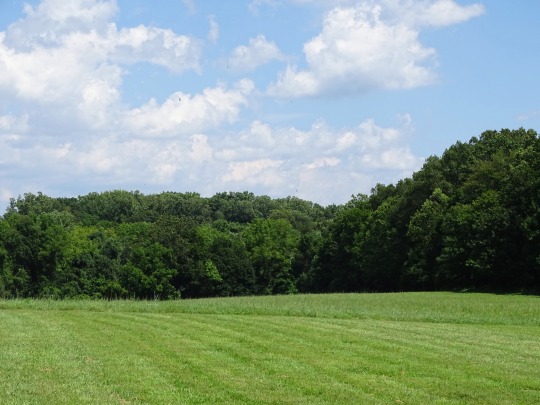



The Battle of Paoli (also known as the Battle of Paoli Tavern or the Paoli Massacre) was a battle in the Philadelphia campaign of the American Revolutionary War fought on September 20, 1777,
#Battle of Paoli#Battle of Paoli Tavern#Battle of Paoli Tavern or the Paoli Massacre#Paoli Massacre#20 September 1777#American Revolutionary War#American War of Independence#Paoli Battlefield Site and Parade Grounds#Mid-Atlantic region#Chester County#Chesco#Paoli Massacre obelisk#Malvern#Philadelphia campaign#Pennsylvania#summer 2019#free admission
1 note
·
View note
Photo


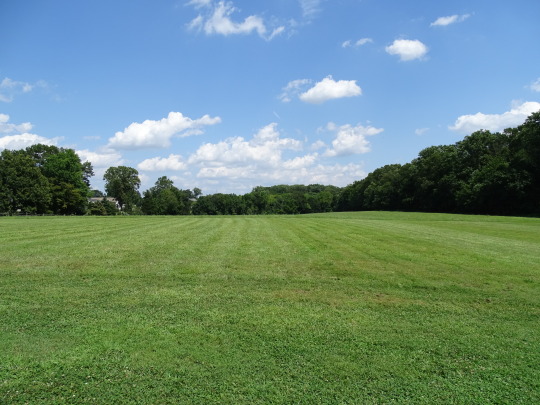

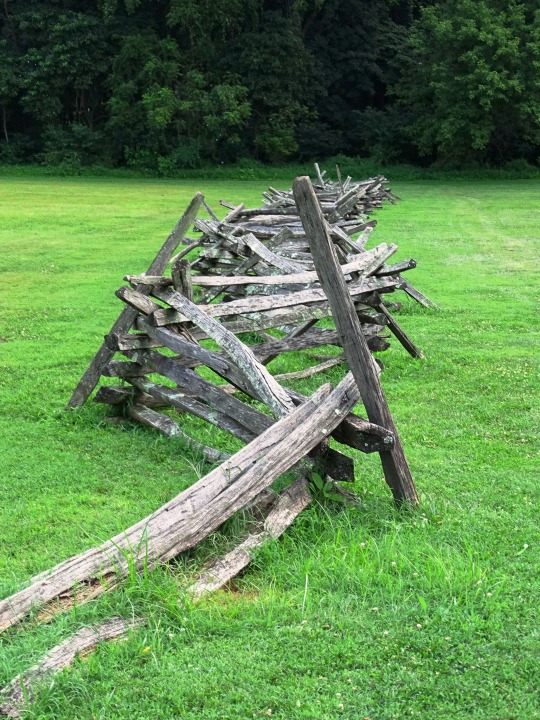
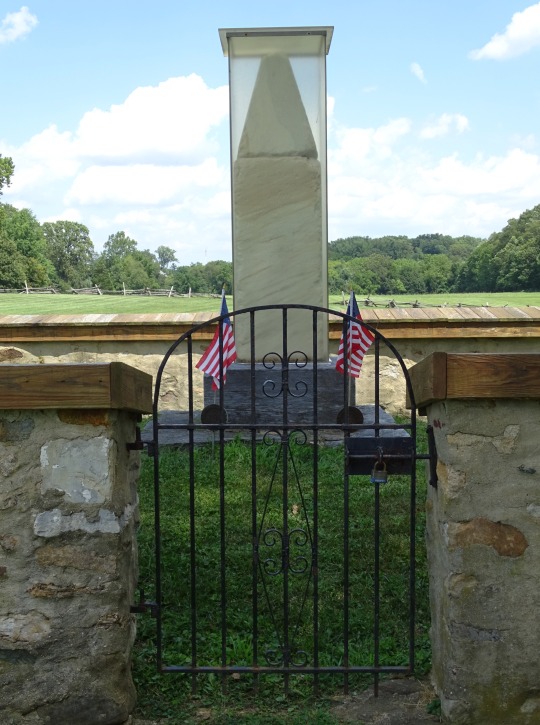



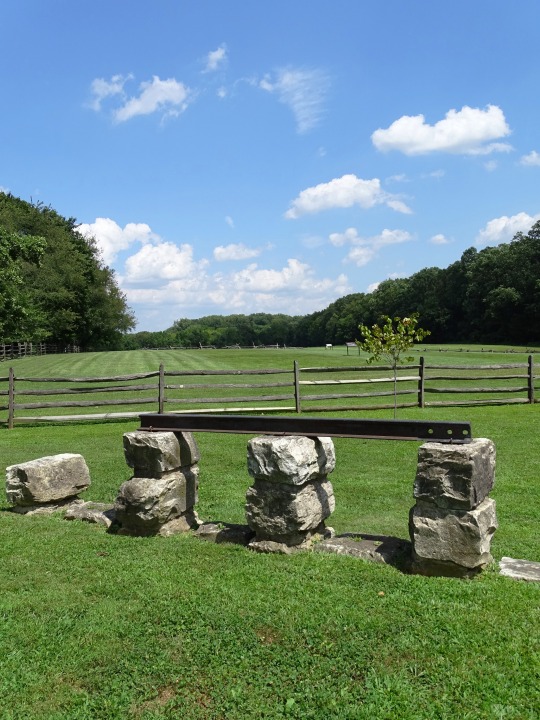
The Battle of Paoli (also known as the Battle of Paoli Tavern or the Paoli Massacre) was a battle in the Philadelphia campaign of the American Revolutionary War fought on September 20, 1777.
#Paoli Massacre Monument#Battle of Paoli#Battle of Paoli Tavern#Malvern#Paoli Massacre#American Revolutionary War#American War of Independence#20 September 1777#Pennsylvania#summer 2019#original photography#anniversary#US history#landscape#Philadelphia campaign#Remember Paoli!#Paoli Battlefield Site and Parade Grounds#forest#woods#lawn#nature#cityscape#tourist attraction#landmark
6 notes
·
View notes
Photo





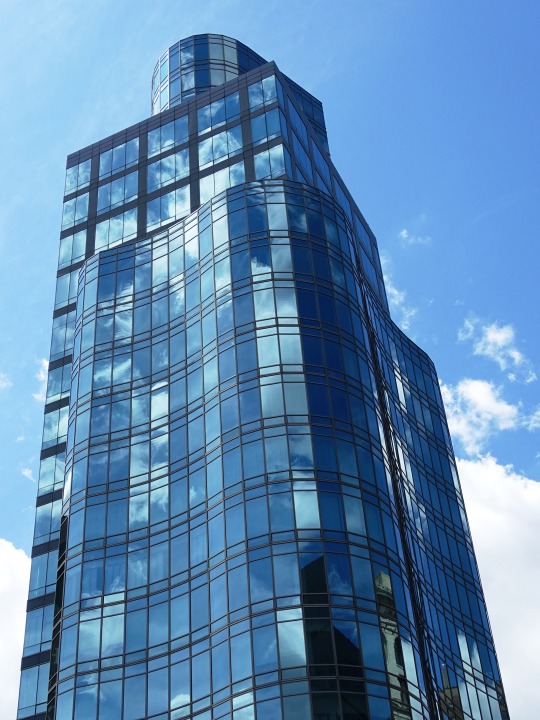




Clouds (No. 583)
Astor Place, Manhattan (eight pics)
Paoli Battlefield Site and Parade Grounds, Malvern (two pics)
#Paoli Battlefield Site and Parade Grounds#American War of Independence#USA#American Revolutionary War#US history#Malvern#Pennsylvania#vacation#landscape#countryside#tourist attraction#landmark#blue sky#clouds#flora#New York City#Manhattan#Astor Place#reflection#architecture#public art#sculpture#Alamo by Tony Rosenthal#Consolidated Edison Building#Cooper Union's Foundation Building#summer 2019#original photography
2 notes
·
View notes
Photo





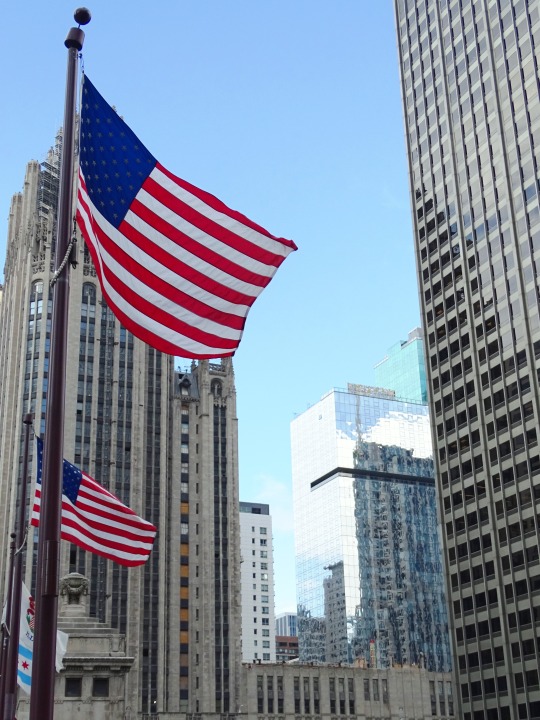
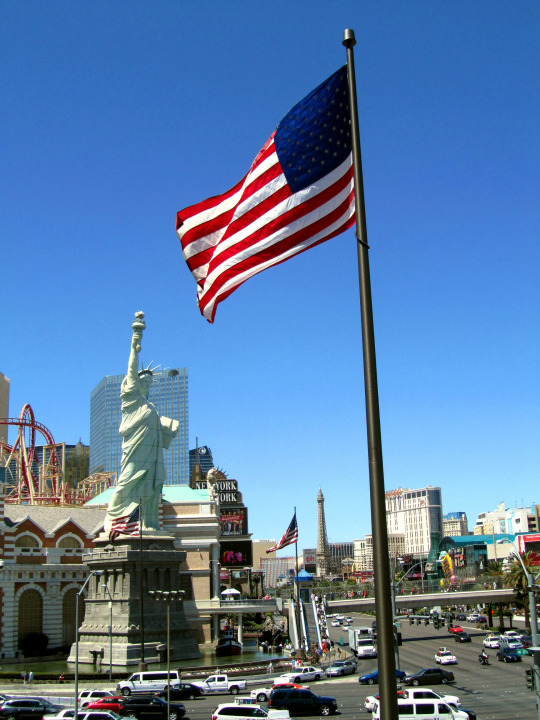



The United States adopted The Star-Spangled Banner as its national anthem on March 3, 1931.
National Anthem Day
In the early years of the republic, there were a few popular patriotic songs, such as "Yankee Doodle" and "Hail Columbia," but there was no national anthem. Today we celebrate the "The Star-Spangled Banner," which became the official national anthem of the United States on March 3, 1931. The song was inspired by a real flag and events that took place surrounding it.
The War of 1812 began in June of 1812. The United States achieved some early victories, but after France and Napoleon were defeated at Waterloo in April of 1814, the British were able to focus more on the war in the United States. After invading Washington D.C. and setting fire to The White House and Capitol in August, the British turned their attention to Baltimore, Maryland.
On September 13, Baltimore's Fort McHenry withstood a 25-hour bombardment from the British Royal Navy. Early on the morning of September 14, soldiers hoisted a large (30 x 42 feet) American flag over the fort. At the time, Francis Scott Key, an attorney who worked in Washington D.C., was on a ship in the harbor of Baltimore. He had been working to negotiate the release of Dr. William Beanes, who had been captured in an earlier battle. Although he was able to secure Beanes' release, the Americans were told they could not leave until the bombardment was over. As Key saw the flag wave over the fort, he wrote the first verse of what would become "The Star-Spangled Banner." At the time he named it "Defense of Fort M'Henry."
Sometime shortly thereafter, Key wrote three more verses. (Today just the first verse is commonly sung, with the fourth verse sometimes being used at formal occasions.) The verses were issued on a broadside by a local printer on September 17, and they were printed in two Baltimore newspapers, the Baltimore Patriot and The American, on September 20. The words were then printed by more papers along the East Coast.
Key set the verses to the tune of an English drinking song called "To Anacreon in Heaven" (also known as "The Anacreontic Song"), which was written in 1775 by John Stafford Smith and originally performed by the Anacreontic Society, a gentlemen's club in England. The song eventually became popular in the United States. Its subject, Anacreon, was an ancient Greek poet known for loving wine. Key had previously used the tune to accompany verses he had written in 1805 about American naval victories in the Barbary War. In fact, some of the wording he had used in the verses for that war were similar in nature to those in "Defense of Fort M'Henry." By one account, it was Key's brother-in-law who noticed the new verses fit the same melody, and convinced him to use it again. In October, Baltimore actor Ferdinand Durang gave the first public performance of the song, and the following month the song appeared in print under the title "The Star-Spangled Banner" for the first time.
The song gained in prominence following the Civil War, because it was about the flag and the flag was increasing as a symbol of national unity at the time. It became a staple of Fourth of July celebrations and other patriotic events. In the 1890s, the U.S. military began using it for ceremonies. In particular, it became the song of the Navy's flag raisings.
Woodrow Wilson signed an order in 1916 to make "The Star-Spangled Banner" the national anthem, but it did not become the official anthem until Congress passed a law fifteen years later. Wilson also asked the Bureau of Education to standardize the song, as there were a few different versions at the time. Five musicians worked on the song, including John Philip Sousa. The new version was first performed on December 5, 1917.
"The Star-Spangled Banner" made its major-sporting-event debut on September 5, 1918, at Chicago's Comiskey Park, during the first game of the World Series between the Chicago Cubs and the Boston Red Sox. The United States was in World War I at the time, and there was some added emotion in the air because a bombing had taken place the day before at the Chicago Federal Building. A military band played the song during the seventh-inning stretch, and players and fans saluted. The song soon began being sung at other baseball stadiums, and then spread to other sports.
On April 15, 1929, Rep. John Linthicum (D-Md.) introduced a bill to make "The Star-Spangled Banner" the national anthem. He had previously introduced such a bill four times before, going all the way back to 1918. As part of his district was in Baltimore, some thought that he was pushing for the bill for himself and for his district more than he was doing it for patriotism and the country. The bill eventually got a hearing before the House Judiciary Committee, and Linthicum presented them with a petition with 5 million signatures, which had been organized by the Veterans of Foreign Wars. He also presented them with resolutions and letters from 150 organizations and messages of support from 25 governors. The House approved the bill on April 21, 1930, and the Senate did on March 3, 1931. President Herbert Hoover signed it the same day and the "Star-Spangled Banner" became the official national anthem of the United States.
Although it has largely been looked upon as a patriotic song about freedom, it has not been without controversy. Key owned slaves for many years, including at the time when he wrote the song, which includes the line "the land of the free." He eventually freed his slaves, and his position was that slaves should return back to Africa. In recent times, some have used the song to protest racial injustice, by staying seated or kneeling when the anthem is played at sporting events. They have seen this as a patriotic gesture, while others have seen it as quite the opposite.
And what became of the actual star-spangled banner that the song was written about? The flag had been sewn by Mary Pickersgill with the help of a few others. After the battle, it was given to George Armistead, the commander of Fort McHenry. He died a handful of years later and his widow, Louisa, received it. It stayed in the family for many years and was rarely seen. In 1878, the Armistead's grandson, Eben Appleton, inherited the flag. He allowed it to be displayed at Baltimore's sesquicentennial in 1880, but then put it in a safety deposit box because he wanted to preserve its condition. He loaned it to the Smithsonian Institution in 1907, and donated it permanently to them in 1912, with the request that it be on display for the public. In the late 1990s, a preservation project was undertaken. The flag can be visited today at the Smithsonian's National Museum of American History.
How to Observe National Anthem Day
There are many ways to celebrate the day:
Read, memorize, and sing "The Star-Spangled Banner."
Visit the original Star-Spangled Banner at the National Museum of American History.
Visit the home where the flag was sewn.
Explore Fort McHenry, where the flag once flew.
Read a book about the "Star-Spangled Banner," such as Marc Ferris' Star-Spangled Banner: The Unlikely Story of America's National Anthem or Marc Leepson's What So Proudly We Hailed: Francis Scott Key, A Life.
Watch a documentary about "The Star-Spangled Banner," or watch a video about the Star-Spangled Banner exhibit.
Watch or listen to noteworthy renditions of the "Star-Spangled Banner."
If you are not from the United States, find out if your country has a national anthem, and learn about it and its history.
Source
#DeWitt#Francis Scott Key#Star-Spangled Banner#official national anthem#3 March 1931#anniversary#US history#water tower#US flag#cityscape#NationalAnthemDay#National Anthem Day#Chicago#Turnbull Wine Cellars#Paoli Battlefield Site and Parade Grounds#Malvern#Las Vegas#Paradise#Annapolis#Maryland#New York Stock Exchange#New York City
1 note
·
View note
Photo
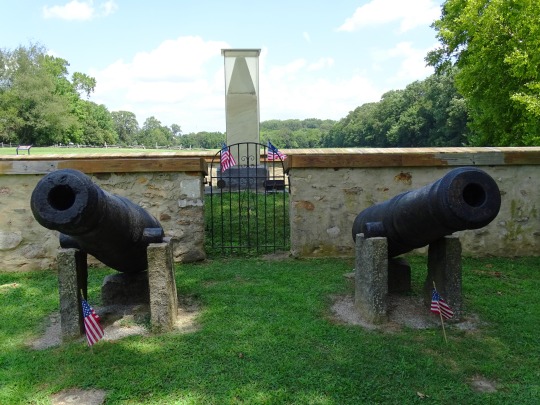

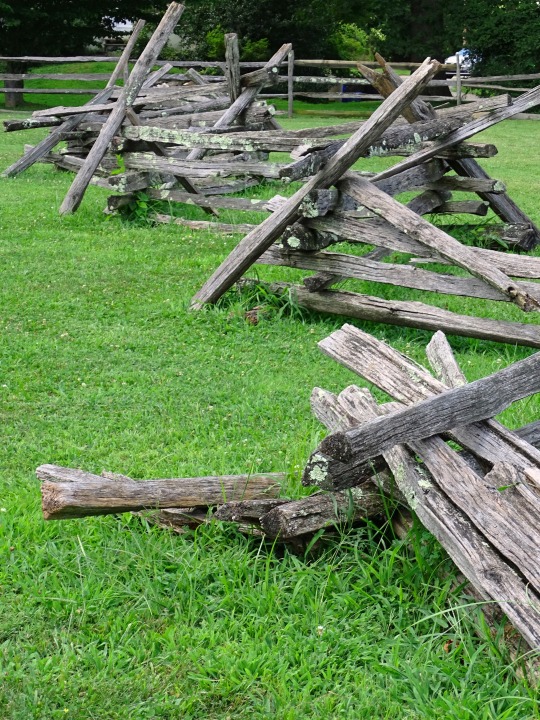
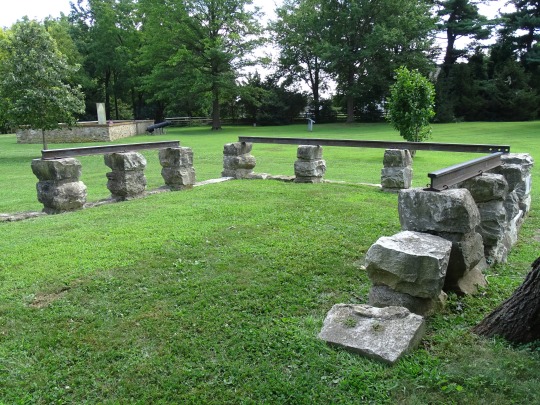
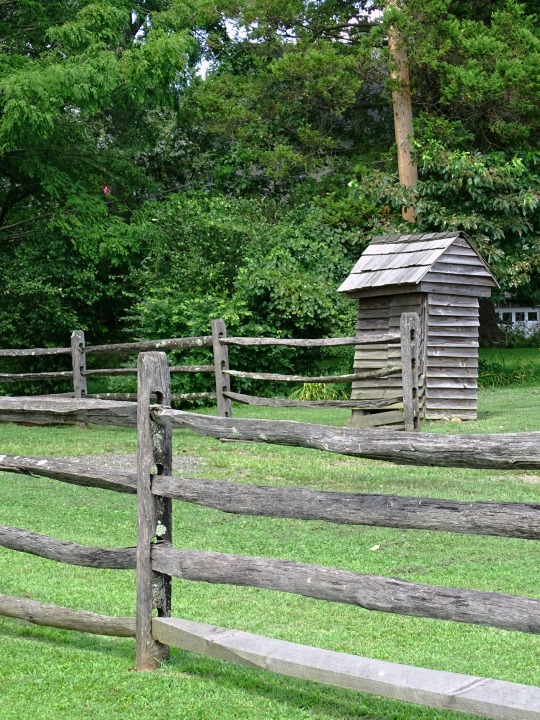


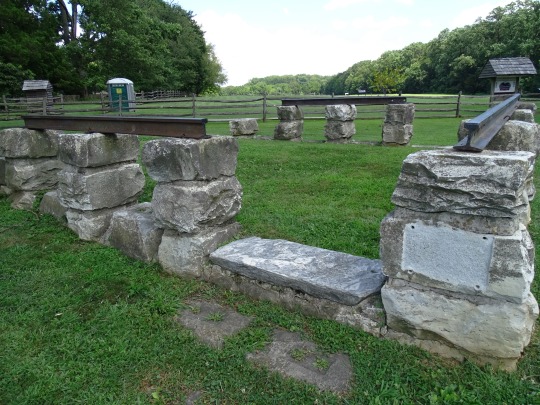


Paoli Battlefield Site and Parade Grounds, Malvern (No. 3)
At 10 p.m. on September 20, British commander Major General Charles Grey marched from the British camp and launched a surprise attack on Wayne's camp, near the General Paoli Tavern, from which the battle takes its name, located near present-day Malvern. Grey's troops consisted of the 2nd Light Infantry, a composite battalion formed from the light companies of 13 regiments, plus the 42nd and 44th Foot. Altogether, his brigade comprised some 1,200 men.
To ensure that the Americans were not alerted, General Grey ordered that troops should advance with muskets unloaded and attack with the bayonet alone. In the case that loads could not be drawn from weapons, he ordered that flints should be removed instead, giving rise to the tradition this was a general order and earning the General the epithet "No Flints" Grey. In fact, Major Maitland, commanding officer 2nd Light Infantry battalion, was given permission to advance with muskets loaded, giving his personal assurance that his men could be relied on.
The British forces, led by a local blacksmith forced to act as guide, approached the camp from a wood and were able to achieve complete surprise. They stormed the camp in three waves—the 2nd Light Infantry in the lead followed by the 44th and the 42nd. Completely unprepared, Wayne's troops fled from the camp and were pursued. Near the White Horse Tavern the British encountered Smallwood's force and routed it as well.
With casualties of only 4 killed and 7 wounded, the British had routed an entire American division. Historian Thomas J. McGuire says that 53 Americans were buried on the battlefield but "whether these were all of the American dead or only those found on the campsite-battlefield is uncertain". Local tradition says that 8 more Americans killed in the battle were buried at the nearby Anglican church of St. Peter-in-the-Great Valley. 71 prisoners were taken by the British, 40 of whom were so badly wounded that they had to be left behind in nearby houses. A total of 272 men were killed, wounded or missing from Wayne's division after the battle. McGuire reports that the day after the battle, 52 dead Americans were buried (and another who was found later), 39 of the buried are un-named. The highest ranking American officer killed was Major Mareen Lamar (sometimes misspelled Marien).
Source: Wikipedia
#Paoli Battlefield Site and Parade Grounds#Malvern#Pennsylvania#vacation#Battle of Paoli#Battle of Paoli Tavern#Paoli Massacre Monument#travel#USA#summer 2019#American War of Independence#Remember Paoli!#ruins#outhouse#lawn#small town#original photography#US history#American Revolutionary War#cannon#tree#forest#flora#nature
2 notes
·
View notes
Photo


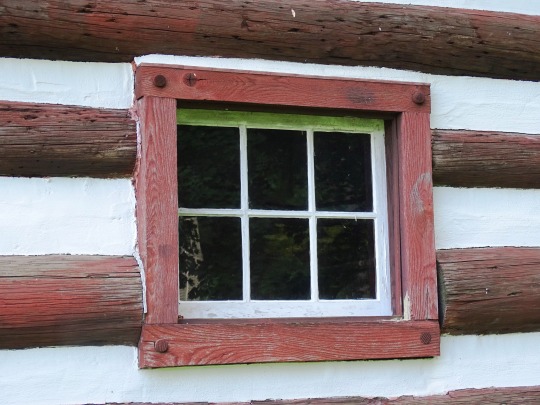
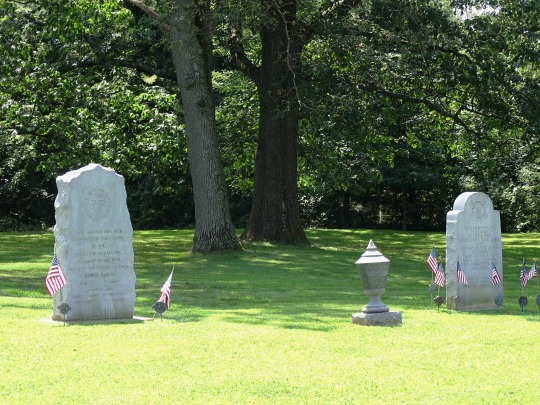
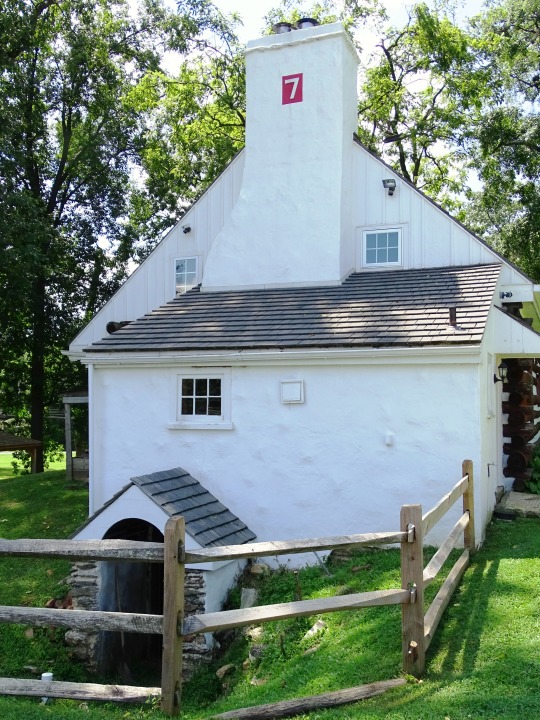
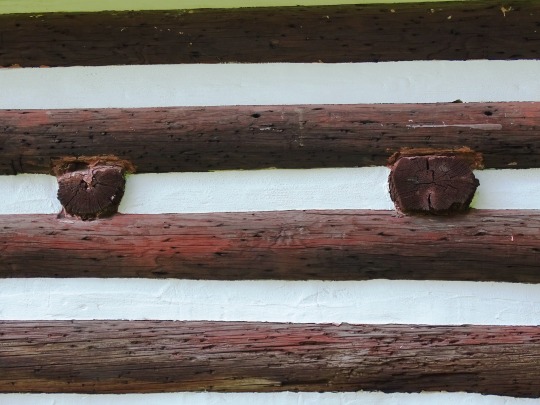

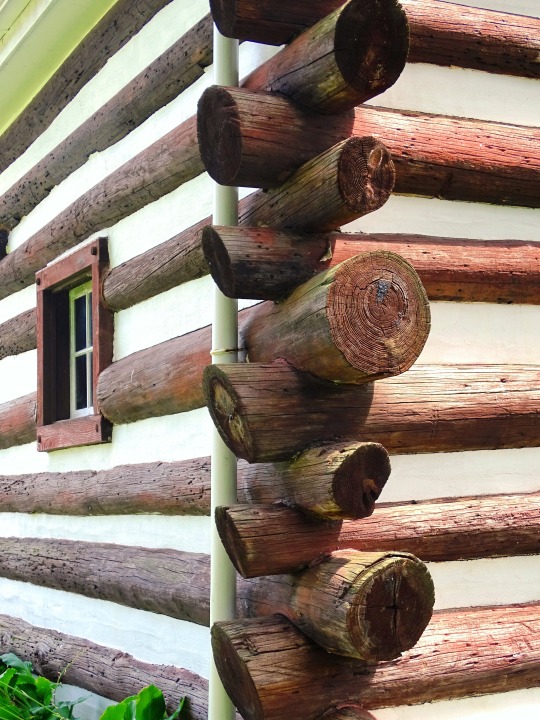


Paoli Battlefield Site and Parade Grounds, Malvern (No. 4)
An official inquiry found that Wayne was not guilty of misconduct but that he had made a tactical error. Wayne was enraged and demanded a full court-martial. On November 1, a board of 13 officers declared that Wayne had acted with honor.
The incident gained notoriety partly because of accounts by eyewitnesses, who claimed that the British had bayoneted or mutilated Americans who tried to surrender. Among them were the following:
I with my own Eyes, see them, cut & hack some of our poor Men to pieces after they had fallen in their hands and scarcely shew the least Mercy to any...
...more than a dozen soldiers had with fixed bayonets formed a cordon round him, and that everyone of them in sport had indulged their brutal ferocity by stabbing him in different parts of his body and limbs ... a physician ... examining him there was found ... 46 distinct bayonet wounds...
The Enemy last Night at twelve o'clock attacked ... Our Men just raised from Sleep, moved disorderly — Confusion followed ... The Carnage was very great ... this is a bloody Month.
The Annals of the Age Cannot Produce such another Scene of Butchery...
The military historian Mark M. Boatner III refuted these allegations, writing: American propagandists succeeded in whipping up anti-British sentiment with false accusations that Grey's men had refused quarter and massacred defenseless patriots who tried to surrender ... The "no quarter" charge is refuted by the fact that the British took 71 prisoners. The "mangled dead" is explained by the fact that the bayonet is a messy weapon.
In any case, Wayne's troops swore revenge and "Remember Paoli!" was used by them as a battle cry at Germantown and at Stony Point.
There is a tradition that, to show their defiance, the men of the 2nd Light Infantry dyed their hat feathers red so the Americans would be able to identify them. In 1833, the Light Company of the 46th Regiment of Foot were authorized to wear red cap distinctions instead of the regulation Light Infantry green, apparently in commemoration of this gesture, and in 1934, the Royal Berkshire Regiment, which carried on the traditions of the 49th Foot, were authorized to wear a red distinction in their head dress although, misleadingly, this was granted "to commemorate the role of the Light Company at the battle of Brandywine Creek". In the second half of the 20th century, the descendants of both regiments wore red backing to their cap badges and did so until 2006 when The Light Infantry and the Royal Gloucestershire, Berkshire and Wiltshire Regiment were absorbed by The Rifles.
In 1877, a granite monument was erected at the site of the battle to replace an 1817 monument that was in poor condition; the Paoli monument inscription replicates the words of the 1817 monument on one side. It stands 22.5 feet (6.9 m) tall and is inscribed on all four sides. It is located in a local park in Malvern that was listed on the National Register of Historic Places in 1997 as the Paoli Battlefield Site and Parade Grounds. There are two contributing buildings, two contributing sites, and five contributing objects included on the listing. They are the Paoli Battlefield Site, Paoli Parade Grounds, Paoli Massacre Monument (1817), Paoli Massacre obelisk (1877), World War I monument (1928), World War II urn (c. 1946), and caretaker's house and garage (1922).
Source: Wikipedia
#Paoli Battlefield Site and Parade Grounds#Battle of Paoli#Battle of Paoli Tavern#Malvern#Remember Paoli!#Paoli Massacre#American Revolutionary War#USA#American War of Independence#US history#architecture#landmark#tourist attraction#free admission#original photography#summer 2019#vacation#travel#cityscape#small town#Pennsylvania#caretaker's house and garage#lawn#log cabin
1 note
·
View note
Photo

Remember Paoli!
What do you think about my pic?
#Paoli Battlefield Site and Parade Grounds#Malvern#Pennsylvania#US history#American War of Independence#Remember Paoli!#Battle of Paoli#USA#travel#Paoli Massacre#American Revolutionary War#lawn#forest#woods#nature#landmark#tourist attraction#photo of the day#grass#summer 2019#original photography#20 September 1777#What do you think about my pic?#landscape#blue sky#clouds#cityscape#vacation
3 notes
·
View notes
Photo


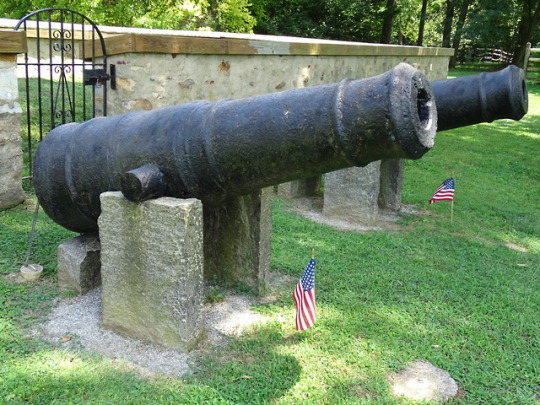




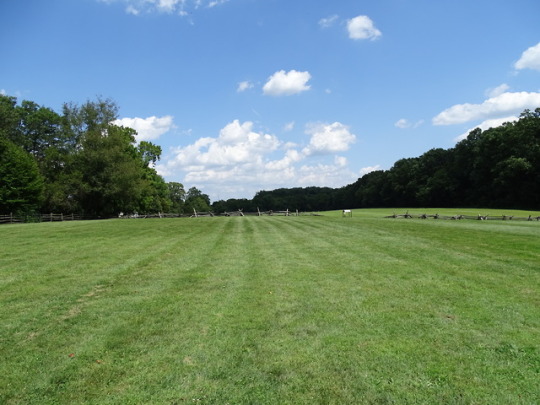
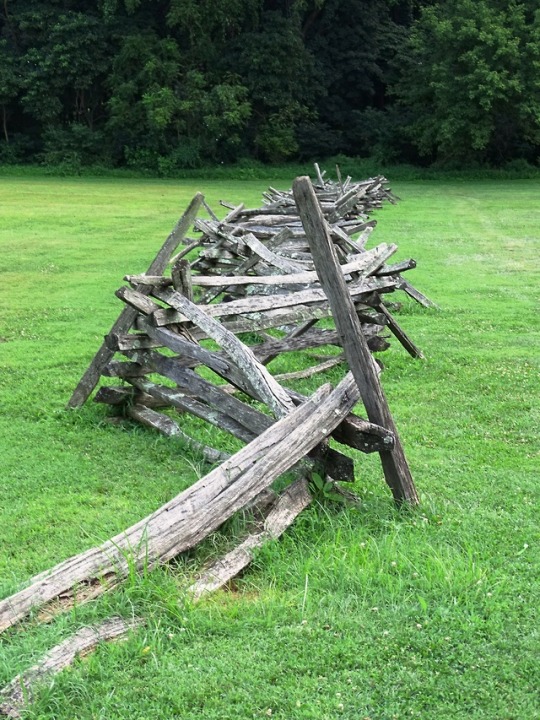

The Battle of Paoli (also known as the Battle of Paoli Tavern or the Paoli Massacre) was a battle in the Philadelphia campaign of the American Revolutionary War fought on September 20, 1777,
#Battle of Paoli#Battle of Paoli Tavern#Paoli Massacre#Paoli#Pennsylvania#USA#20 September 1777#I missed the anniversary#US history#travel#original photography#summer 2019#landmark#Remember Paoli!#battle cry#Battle of Germantown#4 October 1777#anniversary#American Revolutionary War#Paoli Battlefield Site and Parade Grounds#forest#free admission#cannon#stone monument#granite obelisk#canon#Paoli Massacre Monument#caretaker's house and garage#ruin#architecture
8 notes
·
View notes
Photo


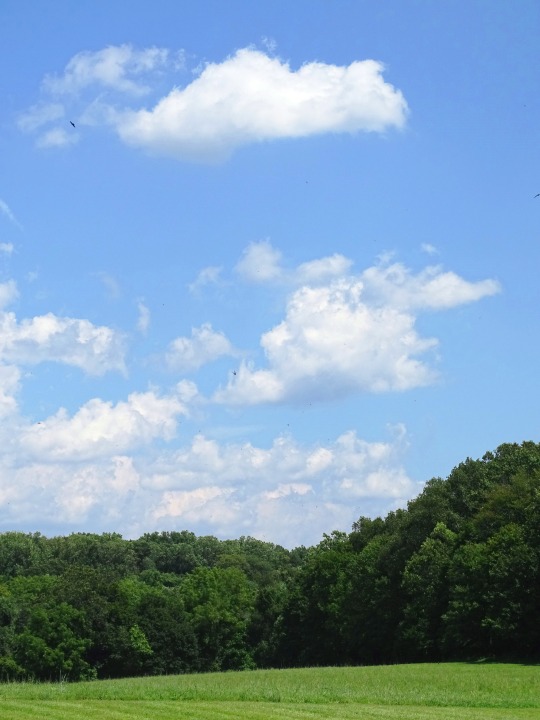


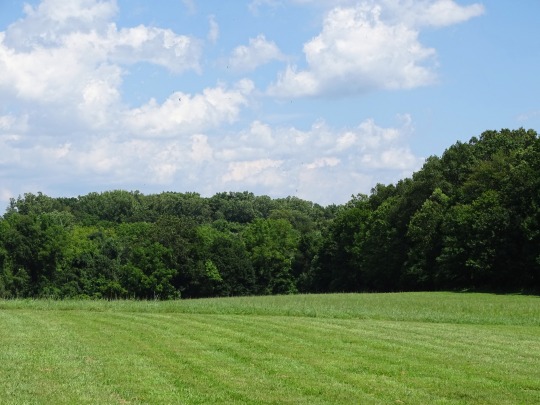
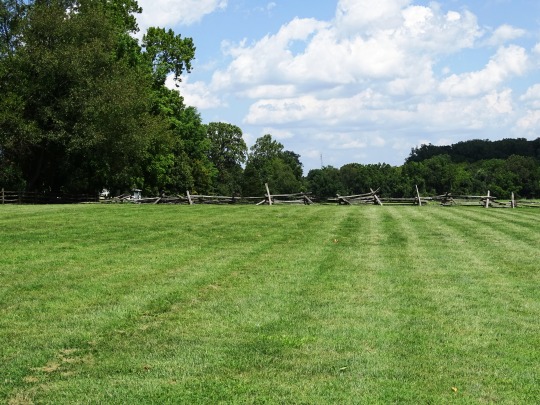
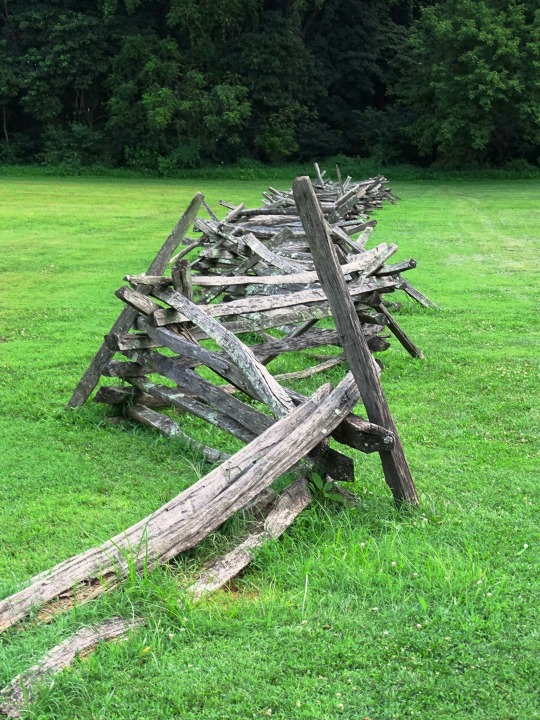
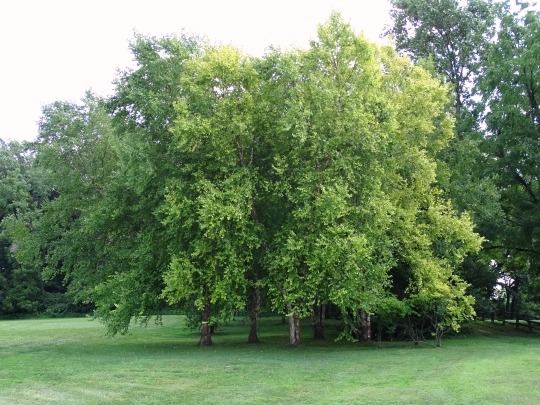

Paoli Battlefield Site and Parade Grounds, Malvern (No. 2)
After the American defeat at the Battle of Brandywine, American Major General George Washington was intent on accomplishing two tasks. He wanted to protect Philadelphia from British forces under the command of Lieutenant General William Howe, and he needed to replenish the rapidly dwindling supplies and munitions stored in Reading, Pennsylvania. Washington withdrew across the Schuylkill River, marched through Philadelphia, and headed northwest. Since the Schuylkill was fordable only far upstream starting at Matson's Ford (present-day Conshohocken), Washington could protect both the capital and the vital supply areas to the west from behind the river barrier. Washington reconsidered and recrossed the river to face the British, who had moved little since Brandywine, because of a shortage of wagons to carry their wounded and their baggage. After the Battle of the Clouds was aborted by bad weather on September 16, Washington again withdrew across the Schuylkill, leaving Brigadier General "Mad" Anthony Wayne's Pennsylvania Division at Chester, Pennsylvania. When the British columns passed by, Wayne followed, under orders from Washington to harass the British and attempt to capture all or part of their baggage train.
Wayne assumed that his presence was undetected and camped close to the British lines in Paoli, Pennsylvania. His division consisted of the 1st, 2nd, 4th, 5th, 7th, 8th, 10th and 11th Pennsylvania Regiments, Hartley's Regiment, an attached artillery company and a small force of dragoons. All told, it was about 1,500 strong. Camped about 1 mile (1.6 km) away was William Smallwood's Maryland militia, about 2,100 relatively inexperienced troops.
The British heard rumors that Wayne was in the area, and General Howe sent out scouts who reported his location near the Paoli Tavern on September 19. Since his position was just 4 miles (6.4 km) from the British camp at Tredyffrin, Pennsylvania, Howe immediately planned an attack on Wayne's relatively exposed camp.
Source: Wikipedia
#Paoli Battlefield Site and Parade Grounds#Malvern#Pennsylvania#vacation#Battle of Paoli Tavern#Paoli Massacre#Paoli Massacre Monument#forest#small town#woods#hills#original photography#American Revolutionary War#American War of Independence#US history#tourist attraction#landmark#USA#summer 2019#nature#flora#fence#Remember Paoli!#obelisk#cannon
6 notes
·
View notes
Photo
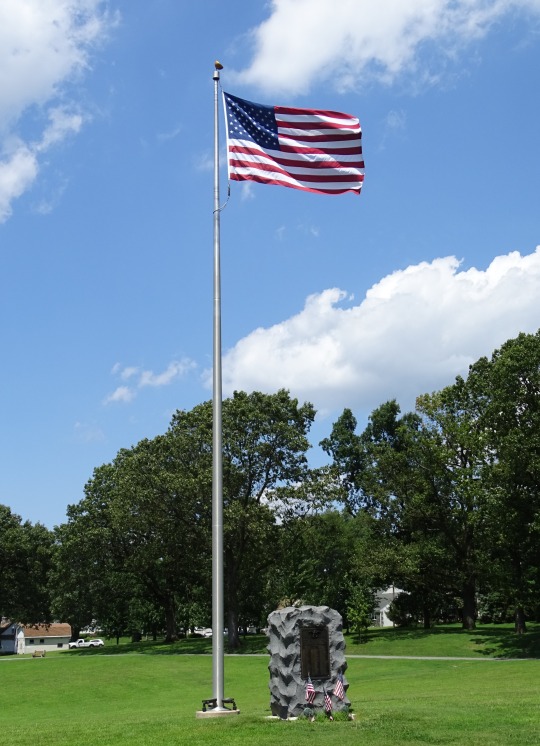
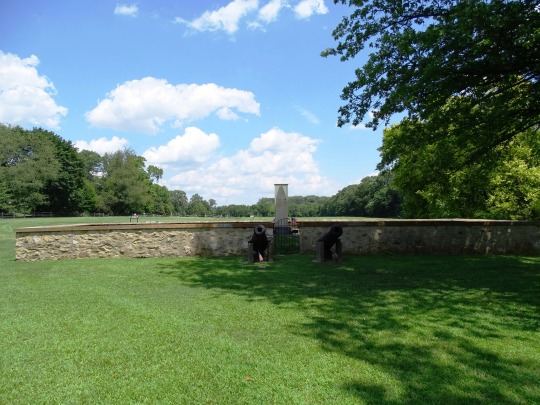





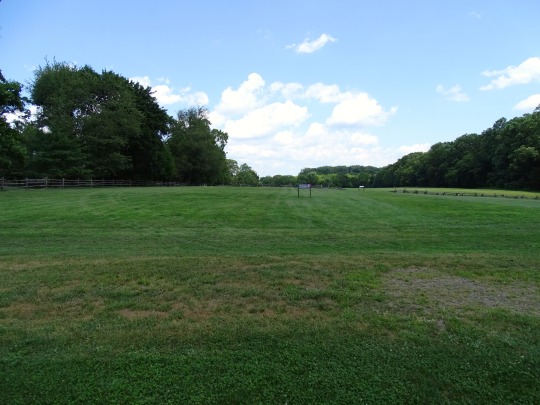
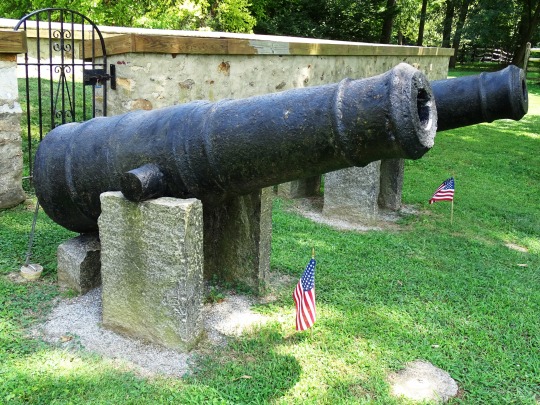
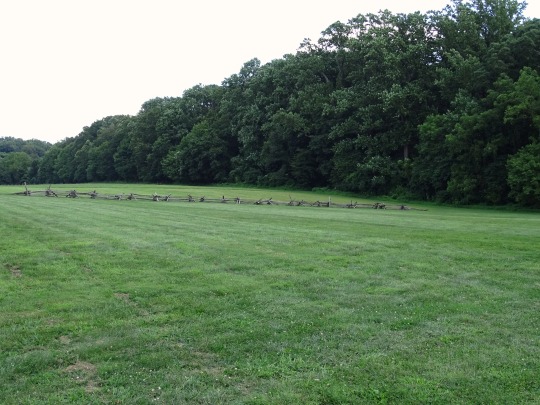
Paoli Battlefield Site and Parade Grounds, Malvern (No. 1)
The Battle of Paoli (also known as the Battle of Paoli Tavern or the Paoli Massacre) was a battle in the Philadelphia campaign of the American Revolutionary War fought on September 20, 1777, in the area surrounding present-day Malvern, Pennsylvania. Following the American retreats at the Battle of Brandywine and the Battle of the Clouds, George Washington left a force under Brigadier General Anthony Wayne behind to monitor and harass the British as they prepared to move on the revolutionary capital of Philadelphia. On the evening of September 20, British forces under Major General Charles Grey led a surprise attack on Wayne's encampment near the Paoli Tavern. Although there were relatively few American casualties, claims were made that the British took no prisoners and granted no quarter, and the engagement became known as the "Paoli Massacre."
Source: Wikipedia
#Paoli Massacre Monument#Malvern#Battle of Paoli#Battle of Paoli Tavern#USA#Pennsylvania#American Revolutionary War#US history#vacation#American War of Independence#Paoli Battlefield Site and Parade Grounds#nature#lawn#forest#woods#public art#free admission#summer 2019#travel#outdoors#tourist attraction#landmark#oblesik#cannon#US flag#original photography#Remember Paoli!
3 notes
·
View notes
Photo
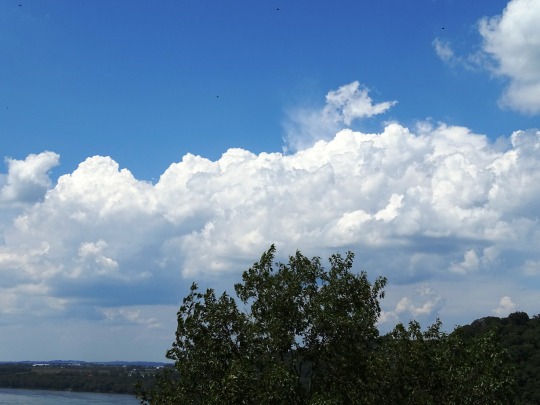

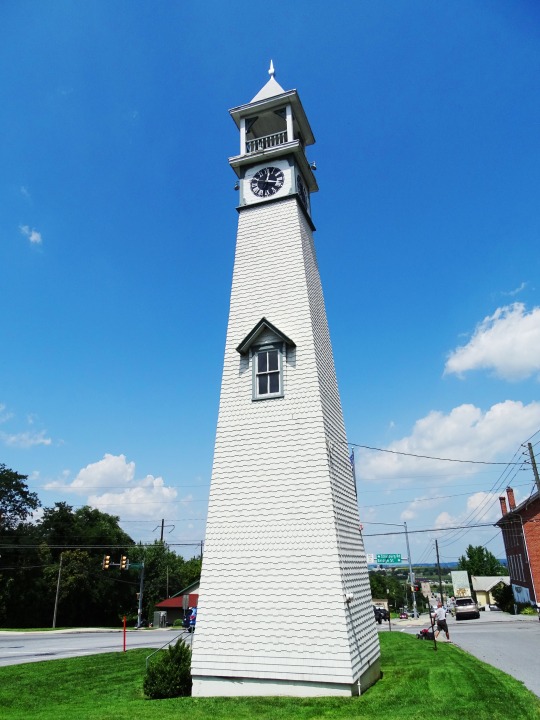




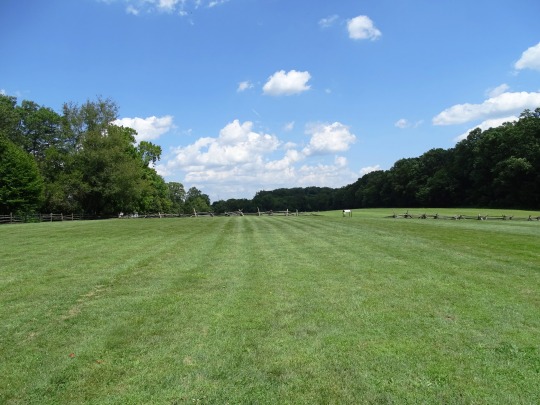


Clouds (No. 582)
Chickies Rock County Park, Columbia (two pics)
Gap Clock Tower, PA
Paoli Massacre Monument, Malvern
Paoli Battlefield Site and Parade Grounds, Malvern (six pics)
#Chickies Rock County Park#Columbia#Pennsylvania#summer 2019#clouds#blue sky#nature#woods#Forest#original photography#travel#vacation#landscape#countryside#cityscape#roadside attraction#tourist attraction#landmark#Susquehanna River#Gap Clock Tower#Paoli Massacre Monument#Malvern#US history#American War of Independence#fence#lawn#Paoli Battlefield Site and Parade Grounds#flora#American Revolutionary War
3 notes
·
View notes